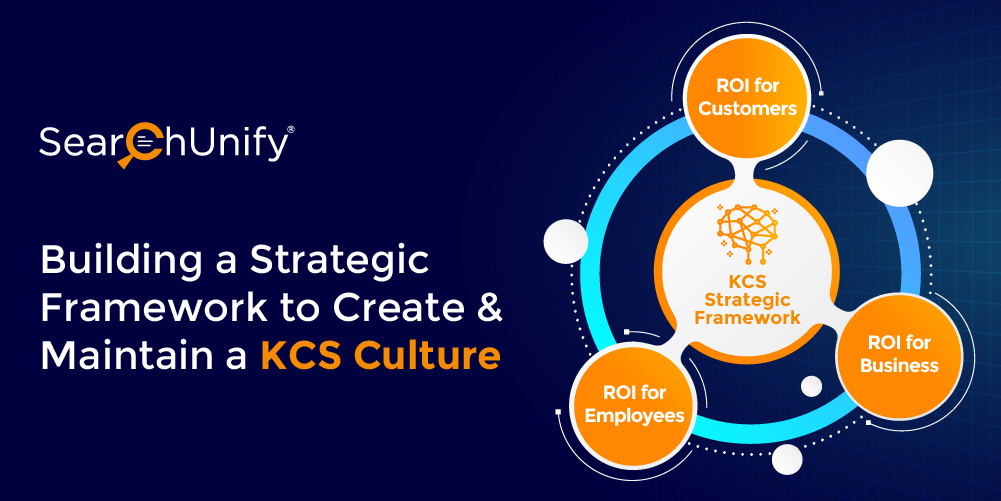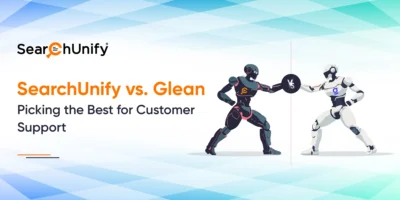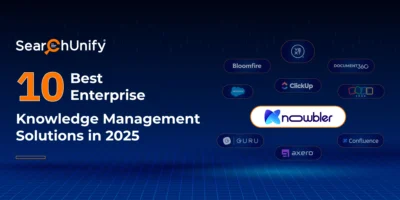
Knowledge lies at the core of every contact center and is critical to their success. It is how agents solve a problem or what they pass on to the customers as a fix. But not too long ago, organizations realized an inherent truth—knowledge continued to live only in the minds of customer service reps.
As a result, creating, curating, and sharing knowledge was becoming a herculean task. Since many resolutions were not captured in a reusable and findable way, customer support representatives were stuck in the vicious cycle of addressing known issues.
But fret not, this is where Knowledge Centered Service (KCS) comes in. It is a response to the firefighting mode of customer service and involves building and maintaining a knowledge pool for effortlessly resolving customer cases.
So, when KCS is the clear solution to the chaotic service and support teams, why do some organizations still elude from adopting it? Let’s find out!
Adopting a KCS Mindset
Although the intrinsic principle of KCS is pretty straight-forward (solve it once, use it often), its adoption is not. It challenges an organization’s traditional and cultural practices, thus making it hard for employees to transition out of them (as ineffective as they might be). Making the matters even worse, the following factors function as a deterrent to a successful KCS implementation and adoption:
- Culture of knowledge hoarding
- Absence of ownership and dedicated resources
- Outmoded technology or manual processes that create technical hurdles
Implementing KCS is a journey, not a destination, that needs to be undertaken from time to time. But, the biggest obstacle here is the cultural shift—which must be religiously adopted by the leaders so that it eventually cascades down to the team level, changing mindsets one at a time.
So without further ado, let’s make a case for building a strategic framework that would enable organizations to connect the dots between KCS practices and the benefits it provides to the three primary stakeholders, namely customers, employees, and business, all while accomplishing organizational goals.
The ROI of a Great KCS Initiative for Stakeholders
Fun fact – KCS improves time to proficiency up to 70% and gives you 30% more satisfied employees.
Given below are the contributions made by the KCS program and how they benefit each of the stakeholders:
1. Customers
Witness a 30 – 50% increase in first-contact resolution after KCS Adoption
“Customers remember the service a lot longer than they remember the price.”
That said, do you know what upsets a customer more than not getting an answer? Getting the wrong answer. But once organizations implement KCS, that becomes history. You can rest assured knowing your knowledge bases are well-documented and up to date. That means agents get instant access to relevant solutions pertaining to basic and complex issues, thus expediting first call resolutions and CSAT scores. What’s more, a repetitive issue can also be published in customer communities to further improve self-service satisfaction. With customers receiving service par excellence each time, you can create patrons for life.
Strategic Framework for Customers
| GOAL | APPROACH (HOW) | KCS CONTRIBUTION |
| Customer Satisfaction | Deliver the right support, on the right channel, at the right time; proactive problem avoidance; faster resolution time | Get access to case-resolving information instantly |
| Customer Loyalty | Ensures a recurrent positive experience to build an emotional connection, Mitigate customer effort | Personalized, Accurate Support, KCS enables agents to focus on value-added services by reducing redundant work |
| Seamless Self-service | Powerful search on self-service portals enables access to updated and relevant answers | Customers can find updated content that easily resolves their queries |
2. Employees
Fun Fact– Adopting KCS leads to 20–40% improvement in employee satisfaction
KCS promotes improving already existing knowledge articles and documenting new resolutions to ensure a dynamic and up-to-date knowledge base. As a result, service reps can quickly find helpful content without running multiple searches.
This ensures your agents focus on resolving unknown issues rather than spending their time updating KBs or reinventing the wheel for known issues. This way, you end up improving employee efficiency and productivity while reducing their effort. Sweet, right?
KCS also minimizes training time for new agents by equipping new agents with all the requisite product and services knowledge. Add to that, all the information that a new customer service rep requires to quickly resolve tickets is readily available at their disposal, thus enabling them to get up to speed.
Strategic Framework for Employees
| GOAL | APPROACH (HOW) | KCS CONTRIBUTION |
| Increase Employee Capabilities | Value knowledge sharing, Encourages overall development | Training and in-depth knowledge of the product |
| Improve Employee Satisfaction and Productivity | Autonomy with accountability, Instills a sense of accomplishment when resolving unknown cases | Eliminate redundant work, recognition for employee contributions |
3. Business
Did you Know? 50–60% of KCS adopters also improved time to resolution.
The final and perhaps the most instrumental benefit is empowering agents to accomplish more in less time. How is that? KCS ensures that case resolving information is readily available to quickly resolve cases. That means organizations can support a higher number of customers without hiring more agents, thus saving costs.
And now that relevant content is at the agent’s disposal, customer requests can be answered during the very first call. This will ensure the customers are happy with the service, thereby improving customer retention and resulting in higher Customer Lifetime Value (CLV).
KCS adoption also makes it easier to identify recurring issues or any gray areas that need improvement. Since knowledge creation and dissemination form an integral part of KCS, creating and sharing articles that directly answer customer queries becomes a piece of cake.
Strategic Framework for Business
| GOAL | APPROACH (HOW) | KCS CONTRIBUTION |
| Increased Revenue | Customer retention, Accelerate new product adoption | Consistent customer experience across support channels, increased FCR, satisfied customers |
| Lower/Reduced Costs | Reduces the time taken to find information | Shrinking time to proficiency and average handle time, lower escalations, reduced support staff turnover. |
Want to Cruise Through Your KCS Adoption Journey?
Then you must tune in to our webinar where Vyjayanthi Sreenivasan, Sr. Manager, Self-Help & Community, Automation Anywhere, shares her complete KCS journey: challenges and best practices to devise and scale the framework expeditiously. You can access the recording of this insightful live webinar here.














